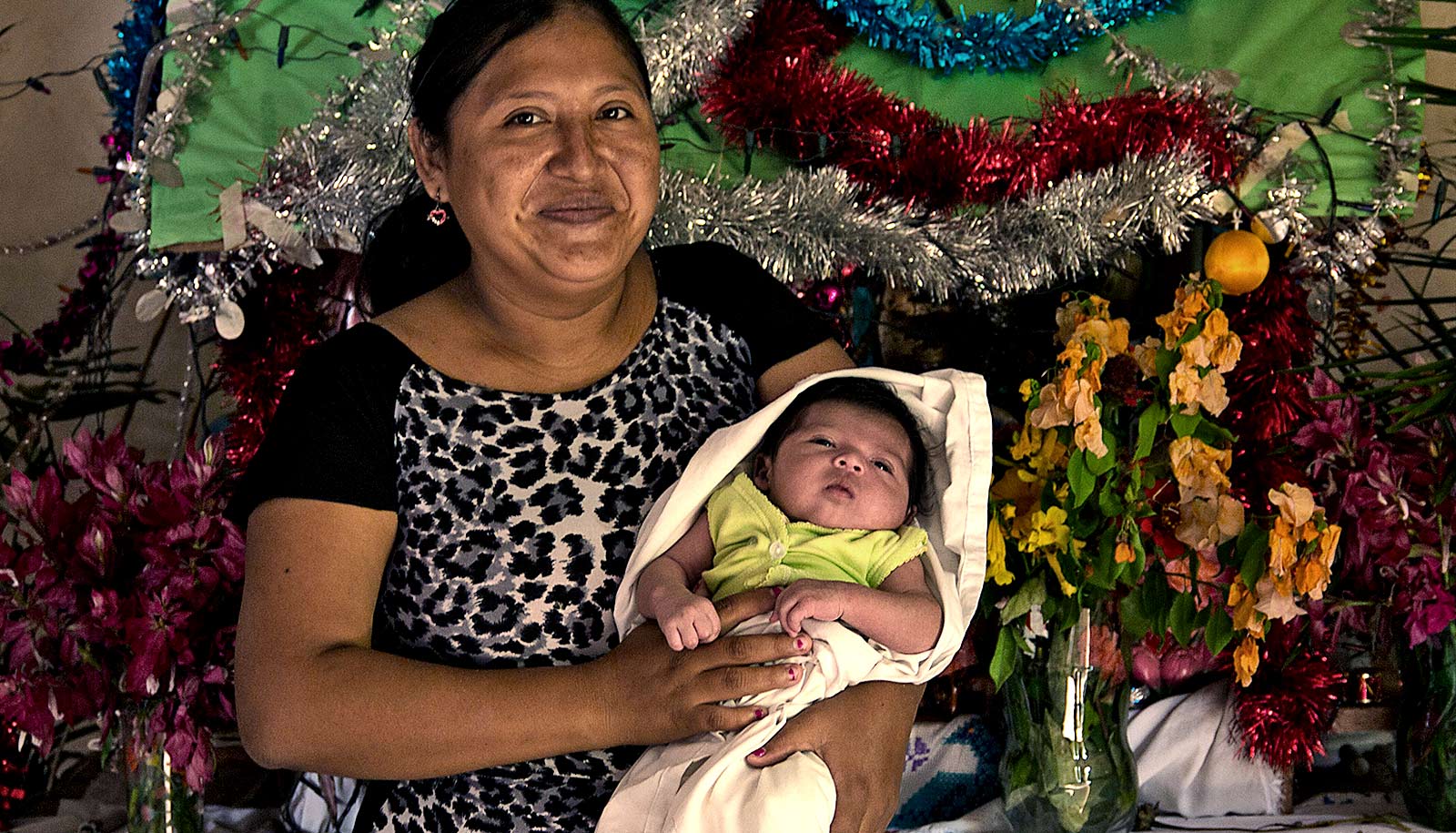Indigenous mothers in farming communities in Yucatán, Mexico, breastfeed for about 1.5 months longer following cesarean deliveries than they do following vaginal deliveries, research finds.
Researcher Amanda Veile, assistant professor of anthropology at Purdue University, believes this is possible because the mothers live in an exceptionally supportive breastfeeding environment.
“Moms living in this Mexican community don’t have to hide in a bathroom to feed their child when they are in public,” says Veile, a biological anthropologist who specializes in infant and child development. “Here, it is a cultural norm to breastfeed anytime, anywhere, and to sustain breastfeeding for longer than two years.
“And we think that prolonged breastfeeding offers protective benefits that reduces some of the health problems we often see in children delivered by C-section.”
Though the World Health Organization recommends an optimal C-section rate of 10-15 percent, the United States C-section rate is more than 30 percent. Although the surgery can save lives, there are concerns about health consequences for the children.
Veile’s paper appears in the American Journal of Human Biology’s special issue on the evolutionary and biocultural causes and consequences of rising cesarean delivery rates, of which Veile is a guest editor. Veile and Karen Rosenberg, a professor at the University of Delaware, are the guest editors of the special issue.
In Veile’s study, she and her team compared breastfeeding durations and childhood infection rates based on how the child was born to Yucatec Maya farmers. Following 88 children from birth until age 5, the results show that those children born via C-sections breastfed for about 2.7 years, whereas vaginally delivered children breastfed for just over 2.5 years. There was no difference in infection rates between the two groups of children.
“What a powerful message supporting breastfeeding,” Veile says. “We need to continue studying this issue, but it seems that these mothers, perhaps subconsciously, increased their breastfeeding efforts post-cesarean.”
Veile says that Yucatec Maya women do experience post-cesarean challenges in the hospital environment, such as prolonged separation from their infants, latching issues, and delayed milk let-down reflex. The mothers aim to overcome these challenges with determination, consumption of special foods, and the use of herbs and compresses. They also receive emotional support and breastfeeding advice from their family and friends.
“Now that C-sections are becoming more universal, it is important to understand more about the consequences for children’s health in a variety of settings,” Veile says. “This includes very rural communities worldwide that are transitioning to increased health care access, while simultaneously experiencing poor community sanitation and the double burden of malnutrition.”
Funding for the work came from the National Science Foundation, Purdue Research Foundation, and Dartmouth College. Veile worked with researchers at Purdue, Indiana University School of Medicine, and the University of Utah.
Source: Purdue University



